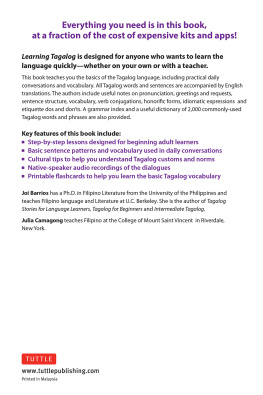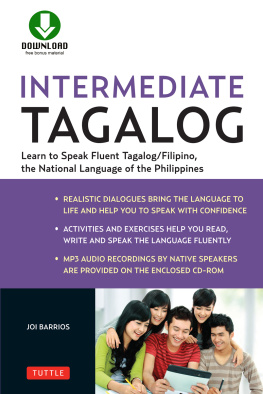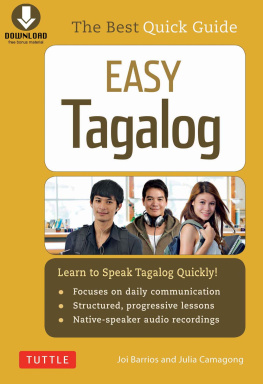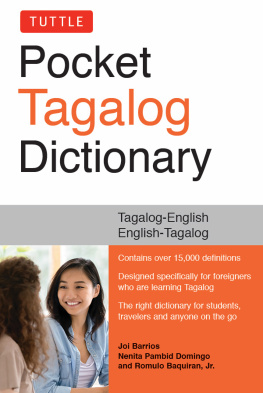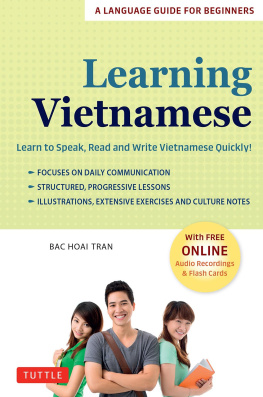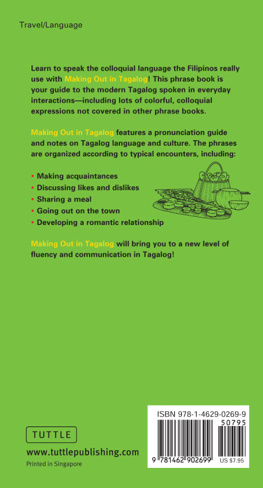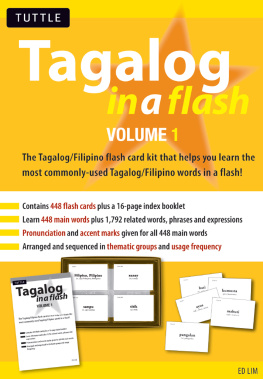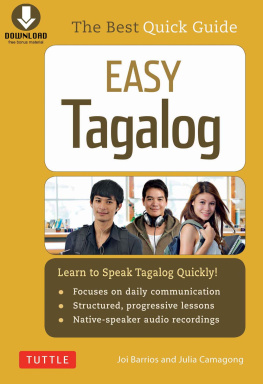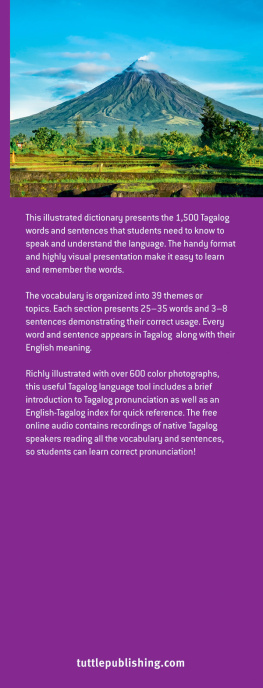Joi Barrios - Learning Tagalog: Learn to Speak, Read and Write Filipino/Tagalog Quickly!
Here you can read online Joi Barrios - Learning Tagalog: Learn to Speak, Read and Write Filipino/Tagalog Quickly! full text of the book (entire story) in english for free. Download pdf and epub, get meaning, cover and reviews about this ebook. year: 2022, publisher: Tuttle Publishing, genre: Science / Home and family. Description of the work, (preface) as well as reviews are available. Best literature library LitArk.com created for fans of good reading and offers a wide selection of genres:
Romance novel
Science fiction
Adventure
Detective
Science
History
Home and family
Prose
Art
Politics
Computer
Non-fiction
Religion
Business
Children
Humor
Choose a favorite category and find really read worthwhile books. Enjoy immersion in the world of imagination, feel the emotions of the characters or learn something new for yourself, make an fascinating discovery.
- Book:Learning Tagalog: Learn to Speak, Read and Write Filipino/Tagalog Quickly!
- Author:
- Publisher:Tuttle Publishing
- Genre:
- Year:2022
- Rating:4 / 5
- Favourites:Add to favourites
- Your mark:
Learning Tagalog: Learn to Speak, Read and Write Filipino/Tagalog Quickly!: summary, description and annotation
We offer to read an annotation, description, summary or preface (depends on what the author of the book "Learning Tagalog: Learn to Speak, Read and Write Filipino/Tagalog Quickly!" wrote himself). If you haven't found the necessary information about the book — write in the comments, we will try to find it.
Let Filipino experts Barrios and Camagong teach you how to speak this beautiful language! Learning Tagalog brings the national language and culture of the Philippines to life, providing you with all the basics you need to speak, read and write the language correctly and naturally.
Designed for beginners, this invaluable guide presents a series of progressive lessons with a focus on conversational communication. It includes useful notes on pronunciation and grammar, greetings, sentence structure, verb conjugations, idiomatic expressions and etiquette dos and donts. It also includes a comprehensive glossary of useful vocabulary and phrases.
Suitable for beginning learners with no prior Tagalog knowledge, the key features of this book include:
- A focus on the everyday speech style of contemporary Manila
- Manga illustrations with short dialogues and key vocabulary
- Clear explanations of Tagalog verb forms and sentence structure
- Extensive exercises and drills plus native-speaker audio recordings
Joi Barrios: author's other books
Who wrote Learning Tagalog: Learn to Speak, Read and Write Filipino/Tagalog Quickly!? Find out the surname, the name of the author of the book and a list of all author's works by series.

